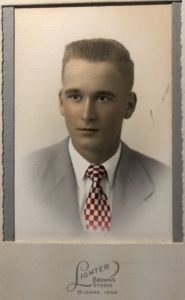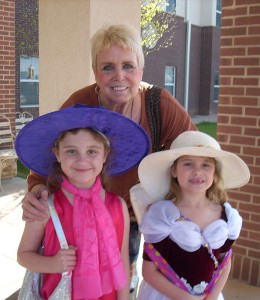Back in the day, before farmers relied solely on herbicides in their Iowa soybean fields, the preferred method of weeding was “walking beans”. It was a predictable summer job. You’d get your crew together, most of the time your family, spread out and walk down the field getting rid of the weeds that grew. Each person would be responsible for the two rows on either side of them. Sometimes you carried a hoe. Sometimes a corn knife, the Iowa farmer’s equivalent of a machete.
The type of weed determined how you killed it. Corn, milkweed, lambs quarter, pig weed, and water weed could all be chopped. Nightshade had to be pulled. As did velvet leaf, a.k.a. “button weed”. One button weed could have a hundred seed pods, each containing at least 700 seeds. When it’s ripe it explodes, sending on the wind a “be fruitful and multiply” scenario that anyone in a John Deere hat cringes to see. So you pull the button weed to make really sure it will die.
When I was in junior high my Dad bought some farm land in north central Iowa. It was excellent land for growing corn and soybeans. The first year we farmed it we discovered a major weed problem. Apparently the previous owner didn’t care much about keeping the field clean. There were huge patches of cockleburs growing in the soybeans.
Cockleburs fell into the “pull” category. Only they weren’t as easy to pull as velvet leaf/button weeds. Some things are like they sound. Velvet leaf is soft. A warm fuzzy in the weed kingdom. Pulling cockleburs is like grabbing sandpaper. Itchy. Scratchy. Irritating. I can still recall the smell of cocklebur juice on my leather gloves and the blisters on my hands.
The cocklebur patches were so thick that one time I pulled 34 plants without moving my feet. Even then my Dad looked back and saw we were missing some. So in the worst of it we got down on our hands and knees to look under the soybean plants to be sure we got them all.
We weren’t walking beans. We were crawling them.
Sure enough, under the leaves were small cocklebur plants that, had we not looked, would have grown up to mock us as we drove by the field two weeks later. Just when I thought I’d got them all, I found some more.
Lately I’ve been thinking about how I live my Christian life. Some weeds are easy to see. And because they are easy to see they are relatively easy to get rid of. Walk and chop as you go along. An obvious unkind word? Yank it out. Lose your temper and make a fool of yourself? Whack it hard and it probably won’t come back. It’s not hard to walk along and get rid of the weeds you see.
More difficult are the weeds growing underneath. The cockleburs of an arrogant spirit. The velvet leaf of pride that, left to grow to maturity, will explode into seeds of destruction.
The only way to find them is to get down on your knees. It’s awkward at first. You even resent the fact that you’re having to kneel. It seems so, well, beneath you. But once you’re down there, the more you look, the more you find. And when you find, you have to pull. Don’t chop at it. Small weeds, left to grow, will later mock you. It was always embarrassing to drive by your field and see one lone button weed, five feet tall and waving at you in the breeze. You had to go back and kill it. But this time the stalk is an inch thick and the roots are set. Much harder to pull out. A back breaker.
If only you’d pulled it out when you were down there on your knees.
As we walk, look back and look under to see what we’re missing. Time spent on our knees pulling weeds makes for a cleaner field.
A cleaner field makes for a better crop.
A better crop makes for a great harvest.
Praying for you as we pull together.
“He who wants his garden tidy doesn’t reserve a plot for weeds.”
– Dag Hammarskjold
“When we confess our sins, He (God) is faithful to forgive us our sins and cleanse us from all unrighteousness.”
– 1 John 1:9
Todd A. Thompson – December 12, 2006



